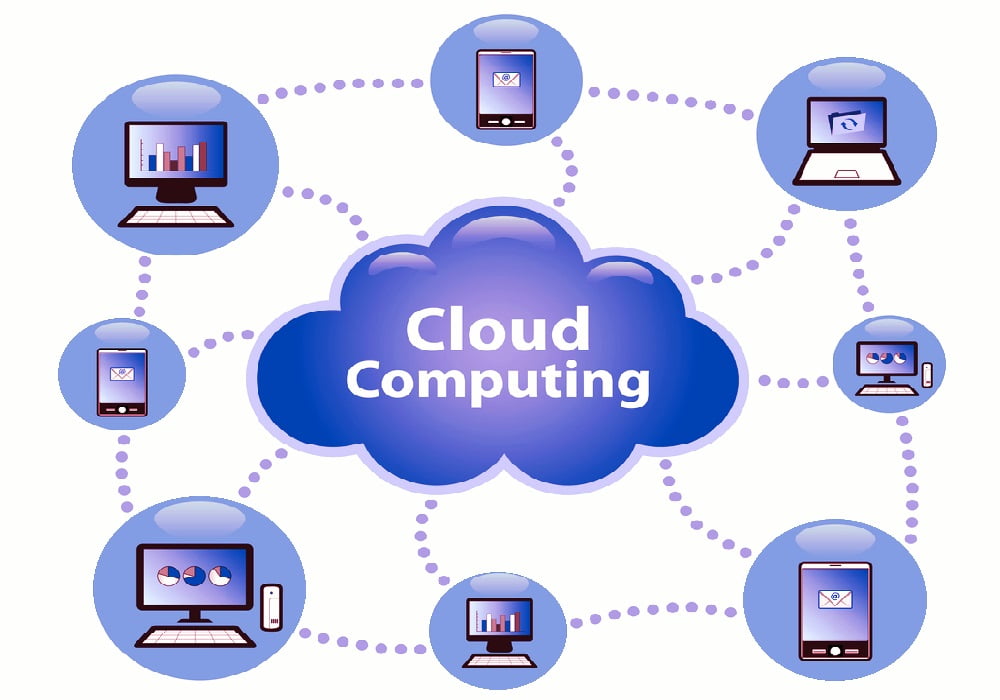Cloud Computing empowers digital transformation and is the foundation for this new agile business world.
The digital transformation uses modern digital technologies to accelerate, automate and improve business processes and customer experiences.
Every company should embrace the process of digital transformation when needed, in order to be competitive and bring added value to the company, and meet the changing business and market dynamics.
Cloud-based infrastructure is key to providing flexible, on-demand access to the resources that support new digital business offerings.
Let’s explore the key characteristics of cloud computing that enable digital transformation and that distinguish cloud computing from traditional on-premises IT architectures.

How Cloud Computing Empowers Digital Transformation?
Cloud computing is an on-demand computing technology that delivers hosted services—including servers, storage, databases, networking, security, software, analytics, etc via the internet.
With the help of modern browsers like Chrome, smartphones, and tablets, users began to live in the cloud. This technology allows access to all kinds of information (documents, emails, calendar, videos) and also makes it available to access from any device (smartphones, tablets, notebooks).
Cloud computing is the gateway to life in the cloud. It allows users to access the programs and perform all their daily tasks, such as creating documents, storing files or sharing photos, working collaboratively, among many others.
The advancement of cloud computing technology created the trend of transforming products into service in order to reduce costs, adapt supply to demand and improve processes. Now, more and more companies are beginning to build their business model based on cloud computing, which has now become a new trend in data center management.
Cloud Computing empowers digital transformation and delivers flexible, on-demand access to the resources that support new digital business offerings.
Cloud computing technology provides agility, access to innovative analytics applications and ready-made testing environments to facilitate the required infrastructure and computing capabilities and to create and test new products and services.
Cloud computing is helping businesses tackle future issues like data management, cybersecurity, and quality control. In addition to this, technologies such as edge computing, AI, blockchain, and many other capabilities are available as services through cloud computing. Consequently, these technologies can be available from any device, increasing their use. Cloud computing-based innovation is also being developed to integrate the cloud into more specific industry activities that will make various internal operations.
One of the main advantages of living in the clouds is that since the browser is available for Android and for smartphones and tablets with iOS, it is possible to access all the files and applications through a single experience and synchronize the bookmarks, open tabs, browsing history and other browser settings on all devices.
The cloud model has reached a point of maturity where it is now possible to replace almost any traditional computing software. Now you can do almost anything in a browser that you used to do with desktop software.
12 Key Characteristics of Cloud Computing Technology
Here are 12 key characteristics of cloud computing that empower digital transformation and that differentiate cloud computing technology from traditional on-premises IT architectures.
1. Flexibility and adaptability:
Cloud computing technology is an essentially flexible information technology (IT) solution that allows businesses to access storage and software flexibly. Systems and real-time data can be accessed quickly and easily, anywhere and anytime. Cloud computing also allows businesses to quickly adapt to changes without their business skipping a beat. They can choose the cloud services that best adapt to the specific needs of their business.
2. Scalability and rapid elasticity:
Cloud scalability refers to the ability to quickly and easily increase or decrease IT resources as needed to meet changing demand. It is one of the defining features of the cloud and the primary driver of its exploding popularity with businesses.
As your company becomes familiar with the use of the Cloud, you can progress from simpler applications to more complex and personalized ones to take full advantage of the potential of this technology model. While scalability tends to represent long-term cloud infrastructure plans, rapid elasticity is more of a short-term characteristic.
3. Accessibility and mobility:
You can access the services and information stored in the cloud applications from anywhere through the Internet, using fixed and mobile devices. In addition, changes to documents are available in real-time for anyone who has the appropriate system credentials to access them.
4. Multi-tenancy and resource pooling:
Resource pooling is a term used in cloud computing to describe a situation in which cloud providers offer provisional and scalable services to multiple clients.
Cloud services and computing resources are designed to support a multi-tenant model. Resource pooling and multi-tenancy allow cloud service providers to pool large-scale IT resources to serve multiple cloud consumers at one time.
Multiple customers can share the same physical infrastructure or the same computing resources in a public or private cloud while retaining privacy and security over their information. Depending on the client’s resource consumption, usage can be adjusted to suit the needs of each client without any changes appearing to the client or end-user.
5. Broad network access:
In the digital age, everyone wants to be able to get the information they need from anywhere and from any device. One of the essential features of cloud computing technology is broad network access.
Cloud computing resources are available to be accessed from a wide range of locations that offer online access and from a wide range of devices, such as smartphones, tablets, PCs, and Macs.
Cloud service providers maintain broad network access and monitor and ensure various metrics that reflect how customers access cloud resources and data.
6. Mass storage:
Cloud storage allows a company to access its data and information from anywhere and does not require it to carry an external hard drive to access its data. A company can save its information in the cloud, without having to invest in purchasing, installing, and maintaining its own servers. The company also has a backup of its information and files in case something happens to the versions stored on the computer.
7. Cost savings:
Cloud computing can actually help you add more cost savings, balance your budget, and increase workplace productivity. It can reduce the spending on infrastructure and resources for its maintenance. The migration of email to a cloud solution provides companies with cost savings, depending on the magnitude of the company. And the migration of a CRM system to the cloud can also represent significant cost savings.
8. Consumption-based pricing:
A consumption-based pricing or pay-per-use pricing model is service delivery and payment system in which the customer pays according to what his company requires at all times and the resources used, thus optimizing economic spending. The basic economics of cloud computing is based on the premise that customers will pay for how long a server is used, or how much bandwidth data is consumed. The cloud services provider can always sell the excess capacity.
9. Resource usage optimization:
Resource optimization is a comprehensive approach to identifying and assigning the right resources correctly to a workload or application. Cloud computing technology provides the opportunity to dynamically scale the computing resources of an application. It helps to match the available resources with the needs of the organization in order to achieve the desired goals. It allows you to reduce the workload of the personnel with respect to technical tasks, and that they can dedicate more time to other more productive ones for your company.
10. Business focus:
Cloud computing allows you to focus on managing your business, reducing the effort and resources required to manage your ICT systems. It enables your business to communicate with employees and share data and files and documents more easily outside of the traditional methods.
Cloud computing technology enables better collaboration between employees, allowing multiple users to share and work on the same projects at the same time.
11. Disaster Recovery:
Cloud Disaster Recovery is a cloud-based service that enables you to back up data, applications, and other resources and quickly restore your organization’s critical systems after a disaster. Since the information is stored in the cloud, you can access it at any time, regardless of whether an incident occurs that prevents you from using your own tools. Cloud DR provides you with remote access to your files in an encrypted and secure virtual environment.
12. Up-to-date and secure technology:
The cloud service provider is in charge of updating and improving the systems, allowing your company to access the latest technology without having to invest effort in its development, and ensuring everyone is using up-to-date synchronized technology. In addition, Cloud computing technology helps develop measures to promote data protection and the security of the information contained in the systems.






[…] Read Here: The Role of Cloud Computing in Digital Transformation […]